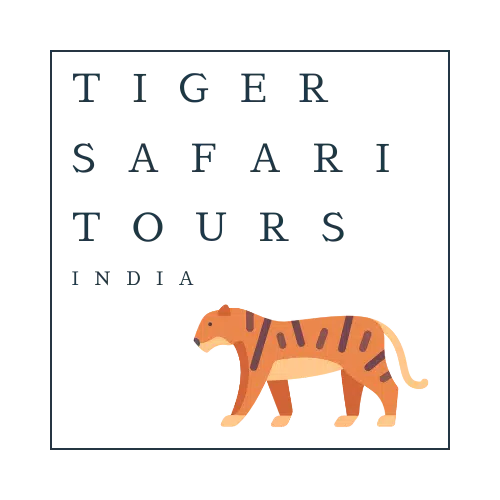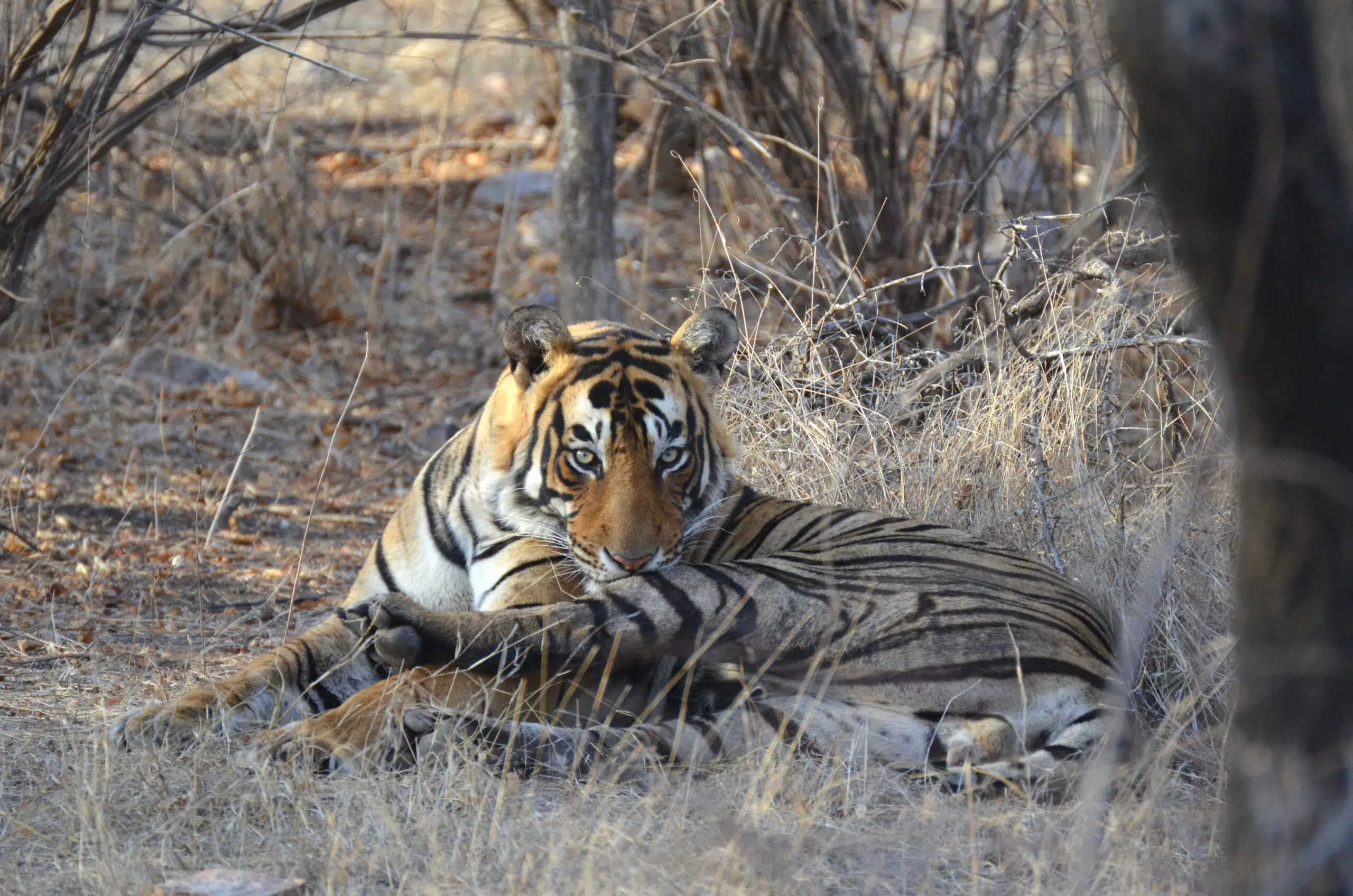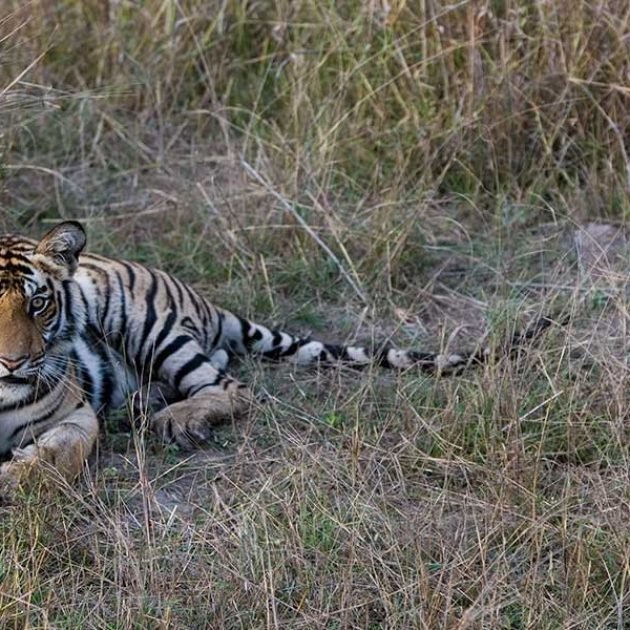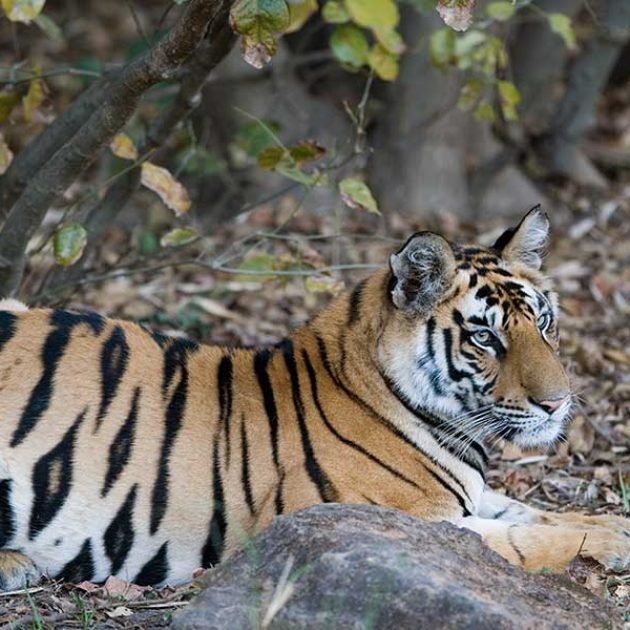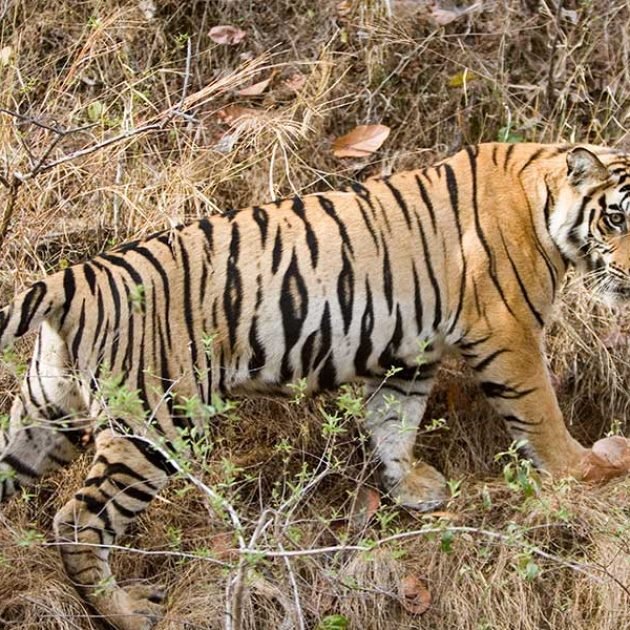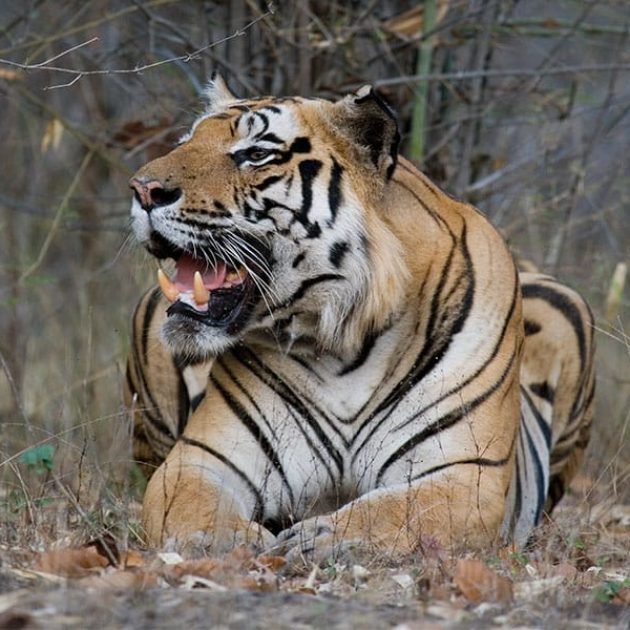An Insider's Guide to Exploring Ranthambore National Park
This Ranthambore Travel Guide is work for utmost detailing brough to you by our team of safari experts. We have curated all you need to know before you pack your bags and head to ranthambore. After refering this travel guide you will know what to expect and how to approach you tiger safari in Ranthambore.
About Ranthambore National Park

The Ranthambore National Park, also known as the Ranthambore Tiger Safari Reserve spans 1334 square kilometers. Out of 1334 square kilometers, the 400 square kilometers area is majorly made up of stony hill crests that drop to wide valleys between the Vindhya and Aravalli mountains, interspersed with fruit trees and swimming lakes.
The stronghold Ranthambore Fort, which towers over the forest and dates back a millennium, is the inspiration behind the name of this park. The Khilji army in 1301 AD and the Mughal empire in 1569 invested in the Ranthambore forest, hills, and forts, which later became the Maharaja of Amer’s exclusive hunting grounds.
It was designated as one of India’s Project Tiger reserves in 1973. Ranthambore National Park was established on November 1st, 1980. The woods that bordered it were named Sawai Man Singh Wildlife Sanctuary & Kailadevi Sanctuary in 1984 and were subsequently included in the Tiger Reserve Zone in 1991.
Other than tigers Ranthambore National Park has other smaller predators like Leopards, hyenas, Jackals, and Jungle Cats. Caracals have also been observed and approximately 300 bird species, langur, sambar, chital, chinkara, and nilgai.

Table of Contents
Why visit Ranthambore National Park

Motives for Exploring the Ranthambore National Park
The preservation and protection of wildlife continue to be a top priority for Ranthambore National Park. In fact, some tigers have become so well-known that they have starred in their own television series and have been the subject of many documentaries. This location has a distinct landscape. This park is a photographer’s dream with its large lakes, grassy slopes, rocky hills, ravines, and deep gorges. We could go on forever listing the benefits of visiting Ranthambore National Park, but these are the top 5.
- Because of its closeness and frequent sightings of tigers, it is best visited with a trip to the Golden Triangle, which includes Agra, Jaipur, and New Delhi.
- Ranthambore Fort has both a rich historical background and a sweeping vista of the jungle.
- The Ranthambore National Park is a unique and exceptional location where the historical past coexists with the natural beauty of the forest. The decaying remnants of this vast wilderness’s former splendour, such as cupolas and chhatris, or old guard posts and palaces, are scattered throughout the terrain. These remnants add to the area’s ethereal and enchanting atmosphere.
- What makes it even more gorgeous are the three sizable lakes, Padam Talao, Raj Bagh Talao, and Milak Talao, which are home to crocodiles.
- With over 300 kinds of birds, Ranthambore National Park is a birdwatcher’s dream come true. To be honest, Ranthambore and its environs are a birdwatcher’s dream come true.
Renowned Indian Tiger Safari Tours at Ranthambore
Our Recommended
Ranthambore Tiger Safari Tours
Our Indian Safari Experts have created some tailormade itineraries. These Bespoke experiences can be woven as per your travel style. You may be oriented to travel for Ranthambore Tiger Safari, some culture and wildlife we have the perfect travel plan for you.
Tigers in the National Park of Ranthambore
Famour Tigers of Ranthambore National Park

A well-known attraction in Ranthambore National Park is tiger sightings. Ranthambore has been home to several renowned tigers, including Ghengis Khan, Noor, Machli, T17, T24, and now T19. Due to rigorous conservation measures over the last ten years, tigers have been more active during the day.
Machli is regarded as the world's most photographed tigress and has been the subject of several documentaries.
Some of the unusual tiger behaviour was seen and captured on camera at Ranthambore National Park during a big male tiger's open hunting from the dense vegetation surrounding the lakes and pursued its victim, a Sambar deer, in the direction of the lakes.
When on a Ranthambore Tiger Safari, one of the most amazing scenes ever seen is a tiger fighting a crocodile for control of the carcass of a Sambar deer and winning in broad daylight.
Photos of the Tigers of Ranthambore
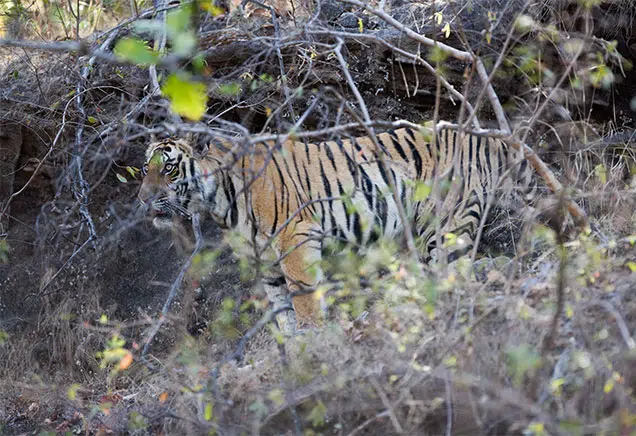

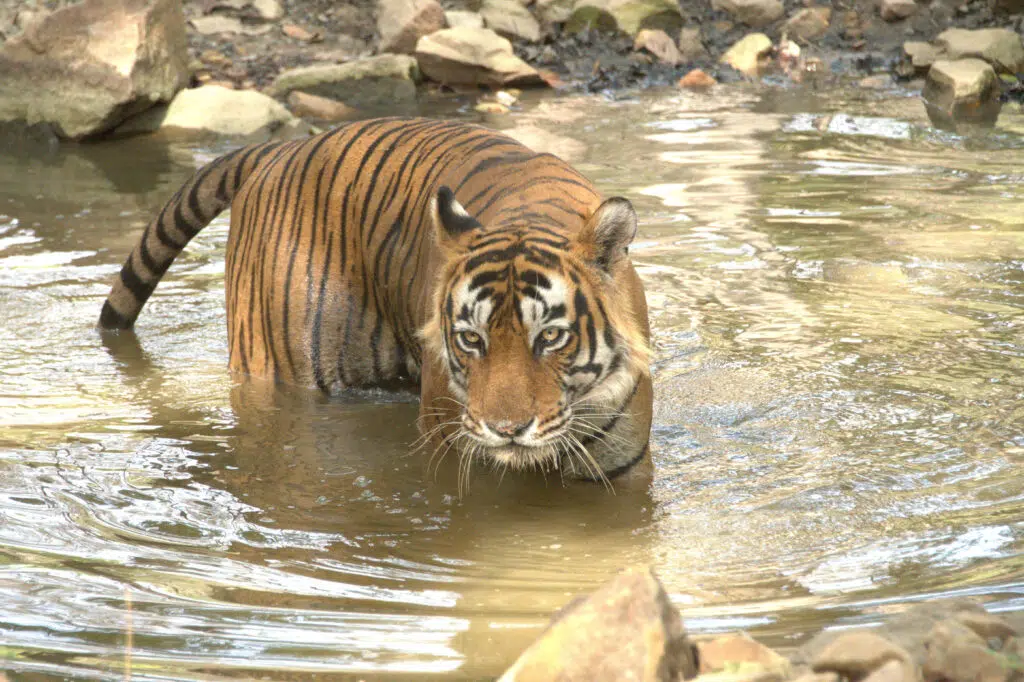
Zones and Kinds of Tiger Safaris in Ranthambore National Park
Map of Ranthambore with Safari Zones of National Park

- The tiger safari zones in Ranthambore National Park are distinct in that they are numbered rather than named.
- There were just 5 zones at first, but as the park grew in popularity and attracted the interest of wildlife enthusiasts, it was enlarged to include 10 tiger safari zones.
- These ten zones are all flourishing, with distinct vegetation and wildlife. In all ten zones during the morning and afternoon safari shifts, a maximum of 144 safari jeeps and canters are permitted.
- Within their permitted zone, both vehicles go on the same approved tiger safari trails.
- Safari vehicles are permitted to travel anywhere inside their designated zone as long as they stay within the network of routes.
- They are not permitted to alter their designated zone. Safari starts at sunrise and ends at dusk and lasts for around three and a half hours.
Nonetheless, during a half-day or full-day tiger safari in India, one might visit several zones within the allocated time. Full-day and half-day safaris in Ranthambore National Park begin at sunrise throughout the summer and winter seasons in zones 1–5, and both must return by 12:30 p.m. in a jeep or gypsy.
Full-day safari travellers may either stay here after lunch and refreshments and explore the forest, topography, flora, and fauna of zones 6–10 in Ranthambore, or they can return at 2:30 p.m. to explore zones 1–5 in search of tigers and return before dusk.
The Major Zones for Tiger Safari in Ranthambore National Park
Safari Zone 1
Zone 1 of Ranthambore National Park is home to Sultan (T-72), Ustad (T-24), and Noor (T-39) and his two cubs.
Other notable locations in Zone 1 include Tuti ka Nalla, Amreshwar Dang, Sultanpur, Peela Panı, and Gada Dub.
Safari Zone 2
Some of the prominent locations of Zone 2 include Jogi Mahal, Phuta Kot, Phuta Bandha, Lahpur Tiraha, and Nal Ghati.
Tigers have been observed in this zone of Ranthambore National Park, including Gayatri (T-22), Ustad (T-24), Krishna (T-19) with three Cubs, Noor (T-39) with her two Cubs, Sultan (T-72), and Jhumru (T-20).
Safari Zone 3
Star Male (T-28) and Krishna (T-19) with her three cubs are the tigers seen in this zone of Ranthambore National Park.
Jogi Mahal, Padam Talab, High Point, Raj Bagh, and Mandook are some of zone 3’s prominent locations.
Safari Zone 4
Some of the main spots in Zone 4 are Singh Dwar, Malik Talab, Lakkar Da, Adidaant, Lambā, and Tamakhan.
Tigers sighted in Zone 4 of Ranthambore National Park include Machli (T-16) (died), Dollar (T-25), Star (T-28), Krishna (T-19) with her three Cubs, Romeo (T-6), Mr. Bond (T-47), and Laila (T-41) with her single cub.
Safari Zone 5
Some of the substantial locations of Zone 5 include Singh Dwar, Anantapur, Jokha, Dhakda, Kachida, Baghda, and Bakola.
Tigers that are observed and seen in this zone of Ranthambore National Park are Romeo (T-6), Suneharı (T-17) with her two Cubs, Dollar (T-25), Bahadur (T-3), and Laila (T-41) with her one cub.
Safari Zone 6
Ustad (T-24), Kumbha (T-34), Sultan (T-72), and Noor (T-39) with two cubs are among the tigers seen in this zone of Ranthambore National Park.
There are also some eminent locations in zone 6. Khabli, Soleshwar, Patwa Ki Baori, Saran Ka Pattha, Kala Pani, etc.
Safari Zone 7
Major spots in Zone 7 of Ranthambore National Park include Chidikho, Jamoda, Kushalipura, and Rajbagh Naka.
Tigers seen in this zone include Ladli (T-8) with Two Cubs and Kumbha (T-34).
Safari Zone 8
Balas, Kherai, Kali, Neemli Dang, Bhat, and Mahakho are some of the significant locations in Zone 8 of Ranthambore National Park.
Tigers spotted in this zone are Ladli (T-8) With Two Cubs, and Kumbha (T-34).
Safari Zone 9
The banks of the Chakal River are one of the key locations in Zone 9, where tigers like Fateh (T-42), and T-59 have been observed on a few occasions.
Safari Zone 10
There have been sightings of tigers in this zone, including T-42 (a male tiger), T-13 (an elderly Sultanpur female tiger), and her three 6-month-old cubs.
Some of the primary locations in Zone 10 include Aantri, Kushalipur, Bodal, Halonda, and Banskhori.
Zones of Ranthambore National Park with Territory of Tigers
The territory of tigers in tourism areas is spread across safari zones. Lots of tigers have territories across multiple zones and are sighted in different zones quite frequently as well. Sharing zone-wise territories of tigers within tourism zone.
| Zones of Ranthambore National Park | Territory of Tigers |
|---|---|
| Zone 1 | Sultana-T107 and cubs (F), T01 (M), Noori T105 & cubs(F) |
| Zone 2 | T 120(M) Noori-T105 & cubs(F), T 60 (F), T 101 (M), Arrowhead T84 (F) and cubs, T123 (M) |
| Zone 3 | Riddhi-T124(F) and cubs, T120 (M) |
| Zone 4 | Riddhi-T124 (F) and cubs, T120 (M), T21 (M), Shakti-T111 & cubs, T 86 (M), T112(M) T 41 (F) |
| Zone 5 | T124 (F), T 125(F), T41(F), and T 103 (F), T121 (M), T86 (M), T112 (M), T111 (F) and cubs |
| Zone 6 | T8 (F), T39 Noor (F), T58 (M), T127 F |
| Zone 7 | T58 (M), T61 (F) |
| Zone 8 | T58 (M), T61 (F) |
| Zone 9 | T62 (M), T99 (F). T108 (M) |
| Zone 10 | T58 (M), T34 (M), T114 & cubs (F), T 99 & cubs (F) |
When to visit Ranthambore?
Ideal Time of the Year to spot Tigers in Ranthambore National Park
Winter
From November until the end of February, the winter season is in effect.
During the busiest times of the winter, there is also a greater likelihood of dense fog in the early morning and late evening.
When it comes to the ideal time to visit Ranthambore National Park, the peak travel periods are from mid-January to mid-April and from the beginning of November to mid-December.:
Summer
The end of March to the end of June is when the summer season occurs.
In these months, daytime highs of 40 °C are common, while nighttime lows hover around 30 °C.
May and June saw very hot days with temperatures that even reach 45 °C. The sun is piercingly hot, and the breeze becomes exceedingly dry.
Tigers and other big predators spend their time in the valleys, in the deep forest, or close to sources of water during this season.
Monsoon
Following the end of summer comes the monsoon season, which begins in July and lasts till September.
During this time, visitors can explore zones 6–10 of Ranthambore National Park, since zones 1–5 are inaccessible due to puddles and muck on the tracks from preceding rain
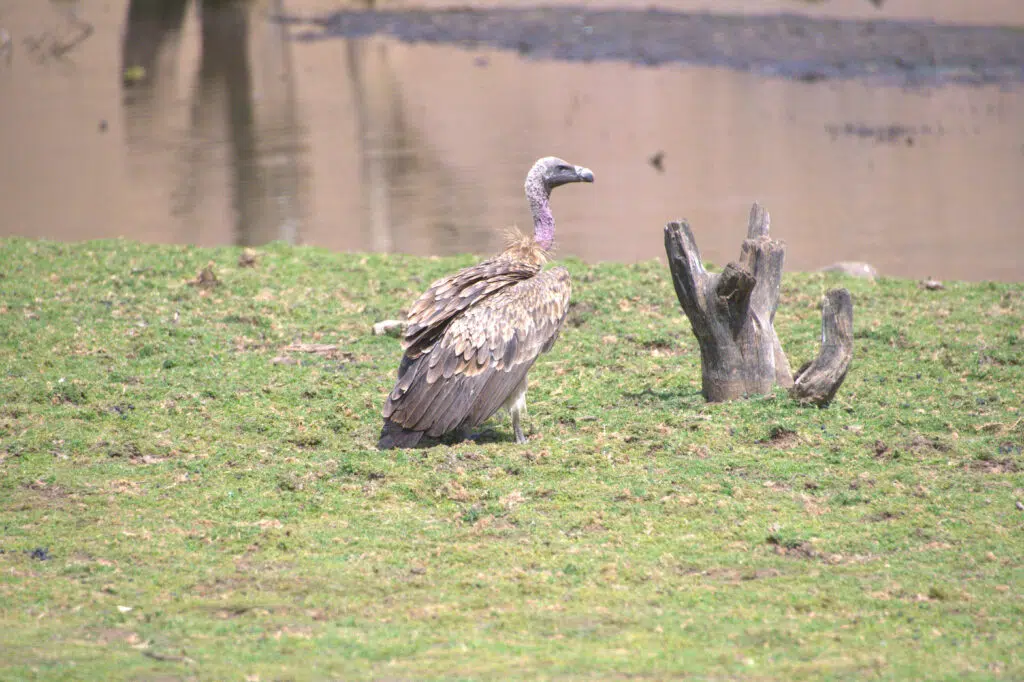
Weather of Ranthambore
Yearly Temperatures of Ranthambore (Monthwise)
| Jan | Feb | Mar | Apr | May | Jun | Jul | Aug | Sep | Oct | Nov | Dec | |
|---|---|---|---|---|---|---|---|---|---|---|---|---|
| Max temperature (daytime) | 23 | 26 | 33 | 38 | 41 | 40 | 34 | 32 | 34 | 34 | 30 | 25 |
| Min temperature (night-time) | 9 | 11 | 17 | 23 | 27 | 28 | 26 | 25 | 24 | 20 | 14 | 10 |
| Heat & Humidity | 0 | Low | Medium | Very High | E | E | VH | VH | H | H | L | 0 |
**Note: 0 = None, L = Low, M = Moderate, H = High, VH = Very high, E = Extreme
How to reach Ranthambore
Arriving at Ranthambore National Park
Reaching by Road
Private taxis or buses may take you from most of India's major towns to Ranthambore National Park.
- New Delhi – Ranthambore: 381 kms (06-hours drive)
- Jaipur – Ranthambore: 180 kms (03- hours drive)
- Agra – Ranthambore: 239 kms (05-hours drive)
- Bharatpur – Ranthambore: 202 kms (04-hours drive)
Reaching by Railway
Sawai Madhopur is the nearest railhead to the park, about 11 km away, followed by Kota and Jaipur, which are 180 and 108 km away, respectively.
Reaching by Air
The park is 180 kilometres from the nearest airport, which is in Jaipur. Excellent connections exist between Jaipur and the nation's largest cities, such as New Delhi, Mumbai, Kolkata, Hyderabad, and so on.
Frequently asked questions
Ranthambore is accessible through rail, road and air. Nearest tailway station is Sawai Madhopur, Jaipur airport is nearest and by road New Delhi, Jaipur, Agra and Bharatpur are nearby cities.
Best month to visit Ranthambore is October to Feb in WInters and March to Mid June in Summers. Monsoons the park is closed (July to September).
Ranthambore should be visited for a minimum of 2-3 days depending on the travel style. 2 days minimum if a cultural tour extension and 3 days if a multi destination wildlife tour. For tiger centric tour 5 days can also be planned.
